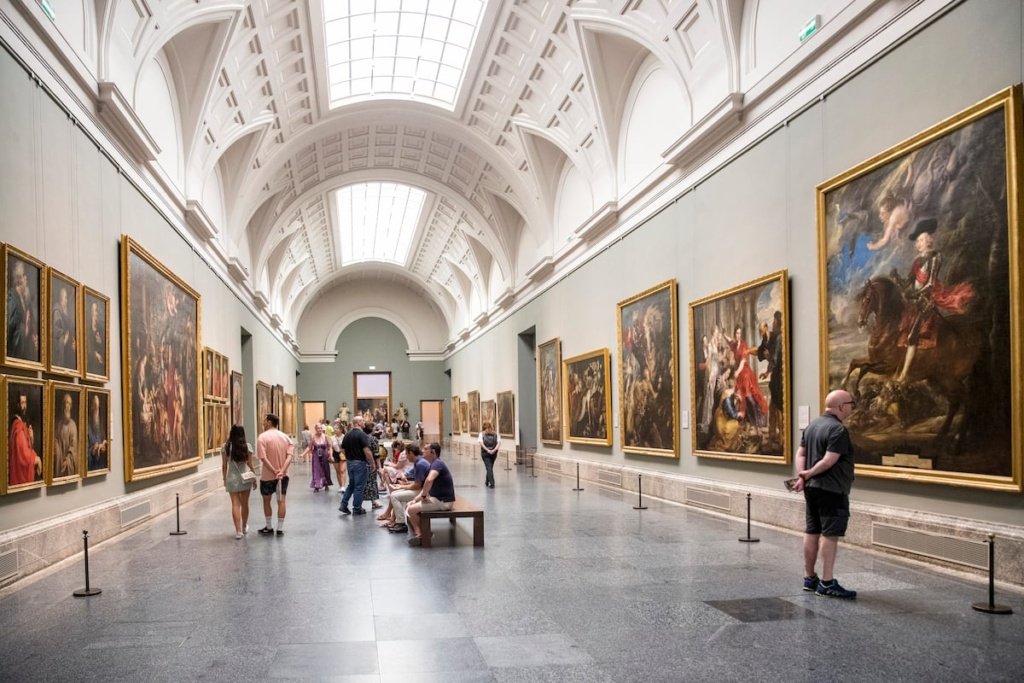How much are the works in the Prado Museum worth? It is impossible to put a figure on it. But in their day, they did have a specific value. This story of painting, ambition, and money begins with the beheading in 1649 of Charles I, King of England, and ends with no fewer than 5,539 paintings distributed among 12 royal sites in Spain. The English monarch’s death also led to the dispersal of the collections of the Earl of Arundel, the Earl of Hamilton, and the heirs of George Villiers, Duke of Buckingham. Suddenly, the market was flooded with incredible works of art.
Today it might seem strange, but back then the most important purchases were made without the future owner seeing them first. Traveling abroad was a slow and dangerous enterprise, and a prolonged absence could become a clear opportunity for courts plagued by rivals and intrigues. Astute agents were needed on the ground. Discretion was paramount. Spain in the days of Philip IV had immense wealth. The Spanish king wisely sent Alonso de Cárdenas as a resident agent to England in 1635. Charles I, who was rather clumsy at recognizing people’s expertise, said of him that he was “foolish, ignorant, and eccentric.” He was wrong on all counts. His own beheading was the beginning of the real feast. The dismantling of the English art collections was the opportunity of the century. Especially the works held by the British Parliament, which served to settle its debts with workers.
At that time, according to the art historian Jonathan Brown, an expert in Spanish Baroque art, the most valuable work was the Holy Family, also known as The Pearl because it was considered the pearl of the collection. It was valued at £2,500. Spain would acquire it for around 4,000 escudos, which would be around $844,374 (€720,000) in today’s currency, although the exact figure is unknown. Today the painting still dazzles visitors to Madrid’s Prado Museum.
Titian, who was considered the best painter of the time, also had his place with Alfonso d’Avalos Addressing his Troops (£400) and Charles V with his Dog (£150). The dazzling painter Andrea del Sarto also has a presence with his Mystical Scene (£300). However, the most expensive purchase in 1649 was the series of nine tapestries by Raphael, in which the painter depicted scenes from the Gospels and the Acts of the Apostles, woven in gold and silk, for which Cárdenas paid, with infinite discretion, £3,599, or around $844,140 (€719,800) today.
Most of the works purchased by Cárdenas in 1650 came from two sellers. Sergeant Major Robert Gravener sold a gem, Veronese’s Moses Saved from the Waters, along with another work attributed to Caravaggio and two bronzes by Francesco Fanelli, which cost only £7, 7 shillings, and 10 pence each. And the painter Remigius van Leemput sold him another 20 pieces at bargain prices. A year later, exhausted, Haro (now an ambassador) requested to return to Madrid. He had been buying for Philip IV for 13 years. However, something happened to deter him.
Parliament sold off 684 works to pay off salary arrears. Cárdenas entered collectors’ heaven. Not only because of the quality of the pieces, but also because he had no competitors. And only on rare occasions did he pay the appraised value. Tintoretto’s The Washing of the Feet, valued at £300, went for £325, Correggio’s The Education of Cupid cost £400, and in 1652 he snapped up two splendid portraits by Albrecht Dürer for £75 when the asking price was £100. He also had enough margin to acquire Rubens’ Peace and War for £137 (now in the National Gallery in London). But he also made mistakes. “This one [Death of the Virgin, by Caravaggio, now at the Louvre] is considered a good painting, but it does not seem to be well finished.” It must be understood that the Lombard genius was considered contemporary art in those days. But the prices were bargain basement.
Such luck was not to last. In 1652, French Cardinal Mazarin, a passionate collector, entered the fray with his own agent, Antoine de Bordeaux. Cárdenas had bought a lot, but not everything. Even so, facing the tough cardinal, he acquired Madonna of the Rose (Raphael) for £500 and, for around £105, added The Death of the Virgin and The Virgin and Child with Saints. Both were by Andrea Mantegna. It was 1653 and the market seemed exhausted.
Philip IV was the first great collector as we understand it today. He expanded Charles V’s collection to incredible levels. It was not until the death of the last of the Habsburgs, Charles II, in 1700, that the extent of the treasure was compiled. The 12 royal sites housed 5,569 paintings, of which some 3,000 can be attributed to the collecting drive of Philip IV.
How much was an escudo?
4,000 Spanish escudos from the 17th century
Escudos were gold coins that were highly valued in their day. Each escudo contained approximately 3.3 grams of gold. Considering the current price of gold (approximately $63.93 or €54.54 per gram for 22-karat gold), the value of one escudo would be around $211 or €180, so 4,000 escudos would be worth $ 844,000 or €720,000. This calculation is based solely on the value of the gold. If the escudos were rare or well preserved, their numismatic value could rise to several thousand dollars per unit.
3,599 pounds sterling from the 17th century
According to estimates based on historical inflation, 1 pound sterling from 1661 could be worth approximately $234 or €200 today, although this figure varies depending on the calculation method and economic context. Therefore, 3,599 pounds would currently be worth around $843,785 or €719,800. This calculation is based on estimated purchasing power and not on the value of the metal or numismatic value.
Source: Analistas Financieros Internacionales (AFI). David Cano, and in-house comparisons and calculations.
Sign up for our weekly newsletter to get more English-language news coverage from EL PAÍS USA Edition


